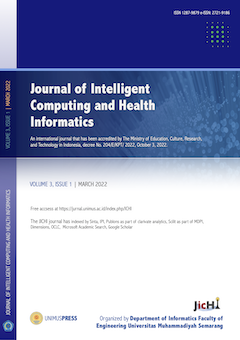UNDERSTANDING CLINICAL WORKFLOW TRANSFORMATION AFTER EHR IMPLEMENTATION
(1) University of Ghana, School of Public Health, Department of Epidemiology
(*) Corresponding Author
Abstract
Abstract
Background: The digitization of health records through Electronic Health Record (EHR) systems has become a global priority for enhancing clinical efficiency, improving data accuracy, and facilitating care coordination. In Ghana, the Lightwave Health Information Management System (LHIMS) was introduced to address inefficiencies associated with paper-based workflows. Juaben Municipal Hospital, one of the facilities onboarded, offers a compelling case for evaluating the system’s impact on clinical workflow.
Objective: This study explored healthcare professionals’ experiences with LHIMS implementation at Juaben Municipal Hospital, focusing on its perceived impact on workflow, documentation, communication, and patient care. It also aimed to identify challenges and opportunities associated with the system and compare pre- and post-EHR workflows.
Method: A qualitative design was employed using in-depth interviews with ten healthcare professionals across clinical units, including physicians, nurses, laboratory technicians, and pharmacists. Thematic analysis was conducted to identify patterns related to workflow changes, documentation practices, communication, training, and system usability.
Results: LHIMS significantly improved documentation accuracy, reduced time spent on routine tasks, and enhanced interdepartmental communication through real-time messaging and electronic referrals. However, challenges such as unstable power supply, poor internet connectivity, and limited training constrain system effectiveness. Staff also reported reduced patient interaction due to the urgency of digital documentation. Despite these limitations, LHIMS was widely perceived as a successful intervention that streamlined clinical operations and improved data management.
Conclusion: The implementation of LHIMS at Juaben Municipal Hospital has modernized clinical workflows by automating manual processes, enhancing documentation quality, and improving communication across departments. Despite its benefits, persistent infrastructure gaps and limited user training hindered full system utilization. To optimize outcomes, future efforts should prioritize reliable infrastructure, continuous training, and user-centered system design. Crucially, digital efficiency must be balanced with patient-centered care to maintain quality clinical interactions.
Keywords
References
Adeniyi, A. O., Arowoogun, J. O., Chidi, R., Okolo, C. A., & Babawarun, O. (2024). The impact of electronic health records on patient care and outcomes: A comprehensive review. World Journal of Advanced Research and Reviews, 21(2), 1446-1455.
Adeniyi, A. O., Arowoogun, J. O., Chidi, R., Okolo, C. A., & Babawarun, O. (2024). The impact of electronic health records on patient care and outcomes: A comprehensive review. World Journal of Advanced Research and Reviews, 21(2), 1446-1455.
Agyemang, E., Adu-Gyamfi, A. B., Esia-Donkoh, K., & Achampong, E. K. (2023). Effective use of electronic health records systems for healthcare delivery in Ghana. Frontiers in Health Informatics, 12. httRs://doi.org/10.30699/fhi.v12i0.510
Ali, S. K., Khan, H., Shah, J., & Nadeem Ahmed, K. (2023). An electronic health record system implementation in a resource limited country-lessons learned. Digital health, 9, 20552076231203660. https://doi.org/10.1177/20552076231203660
Ali, S. K., Khan, H., Shah, J., & Nadeem Ahmed, K. (2023). An electronic health record system implementation in a resource limited country-lessons learned. Digital health, 9, 20552076231203660. https://doi.org/10.1177/20552076231203660
Alotaibi, Y. K., & Federico, F. (2017). The impact of health information technology on patient safety. Saudi medical journal, 38(12), 1173–1180. https://doi.org/10.15537/smj.2017.12.20631
Amoateng, C. N. A., & Achampong, E. K. (2024). Impact of the Lightwave Health Information Management Software on the Dimensions of Quality of Healthcare Data. Healthcare Informatics Research, 30(1), 35. https://doi.org/10.4258/HIR.2024.30.1.35
Antor, E., Owusu-Marfo, J., & Kissi, J. (2024). Usability evaluation of electronic health records at the trauma and emergency directorates at the Komfo Anokye Teaching Hospital in the Ashanti Region of Ghana. BMC Medical Informatics and Decision Making, 24(1), 231. https://doi.org/10.1186/s12911-024-02516-1
Antor, E., Owusu-Marfo, J., & Kissi, J. (2024). Usability evaluation of electronic health records at the trauma and emergency directorates at the Komfo Anokye teaching hospital in the Ashanti region of Ghana. BMC Medical Informatics and Decision Making, 24(1), 231.
Brown, B. B., Patel, C., McInnes, E., Mays, N., Young, J., & Haines, M. (2016). The effectiveness of clinical networks in improving quality of care and patient outcomes: a systematic review of quantitative and qualitative studies. BMC health services research, 16(1), 360.
Campanella, P., Lovato, E., Marone, C., Fallacara, L., Mancuso, A., Ricciardi, W., & Specchia, M. L. (2016). The impact of electronic health records on healthcare quality: A systematic review and meta-analysis. European Journal of Public Health, 26(1), 60–64. https://doi.org/10.1093/eurpub/ckv122
Chimbo, B., & Motsi, L. (2024). The effects of electronic health records on medical error reduction: extension of the DeLone and McLean information system success model. JMIR Medical Informatics, 12, e54572.
Evans, R. S. (2016). Electronic Health Records: Then, Now, and in the Future. Yearbook of Medical Informatics, S48–S61. https://doi.org/10.15265/IYS-2016-s006
Evans, R. S. (2016). Electronic health records: then, now, and in the future. Yearbook of medical informatics, 25(S 01), S48-S61.
Faulkenberry, J. G., Luberti, A., & Craig, S. (2022). Electronic health records, mobile health, and the challenge of improving global health. Current problems in pediatric and adolescent health care, 52(1), 101111.
Kim, M. O., Coiera, E., & Magrabi, F. (2017). Problems with health information technology and their effects on care delivery and patient outcomes: a systematic review. Journal of the American Medical Informatics Association, 24(2), 246-250.
Mensah, N. K., Boadu, R. O., Adzakpah, G., Lasim, O. U., Amuakwa, R. D., Taylor-Abdulai, H. B., & Chatio, S. T. (2023). Electronic health records post-implementation challenges in selected hospitals: A qualitative study in the Central Region of southern Ghana. Health Information Management Journal, 52(3), 204–211. https://doi.org/10.1177/18333583221096899
Nguyen, O., Shah, S., Gartland, A., Parekh, A., Turner, K., Feldman, S., & Merlo, L. (2020). Factors associated with nurse well-being in relation to electronic health record use: A systematic review. Journal of the American Medical Informatics Association, 28(2), 371–380. https://doi.org/10.1093/jamia/ocaa289
Olakotan, O., Samuriwo, R., Ismaila, H., & Atiku, S. (2025). Usability Challenges in Electronic Health Records: Impact on Documentation Burden and Clinical Workflow: A Scoping Review. Journal of Evaluation in Clinical Practice, 31(4), e70189.
Popescu, C., El-Chaarani, H., El-Abiad, Z., & Gigauri, I. (2022). Implementation of health information systems to improve patient identification. International Journal of Environmental Research and Public Health, 19(22), 15236.
Popescu, C., El-Chaarani, H., El-Abiad, Z., & Gigauri, I. (2022). Implementation of health information systems to improve patient identification. International Journal of Environmental Research and Public Health, 19(22), 15236.
Shanafelt, T. D., Dyrbye, L. N., Sinsky, C., Hasan, O., Satele, D., Sloan, J., & West, C. P. (2016). Relationship between clerical burden and characteristics of the electronic environment with physician burnout and professional satisfaction. ElsevierTD Shanafelt, LN Dyrbye, C Sinsky, O Hasan, D Satele, J Sloan, CP WestMayo Clinic Proceedings, 2016•Elsevier, 1–13. https://doi.org/10.1016/j.mayocp.2016.05.007
Upadhyay, S., & Hu, H. F. (2022). A qualitative analysis of the impact of electronic health records (EHR) on healthcare quality and safety: clinicians’ lived experiences. Health Services Insights, 15, 11786329211070722.
Zheng, K., Ratwani, R. M., & Adler-Milstein, J. (2020). Studying workflow and workarounds in electronic health record-supported work to improve health system performance. Annals of Internal Medicine, 172(11), S116–S122. https://doi.org/10.7326/M19-0871
Article Metrics
Abstract view : 8 timesDOI: https://doi.org/10.26714/jichi.v6i2.19048
Refbacks
- There are currently no refbacks.
____________________________________________________________________________
Journal of Intelligent Computing and Health Informatics (JICHI)
ISSN 2715-6923 (print) | 2721-9186 (online)
Organized by
Department of Informatics
Faculty of Engineering
Universitas Muhammadiyah Semarang
W : https://jurnal.unimus.ac.id/index.php/ICHI
E : [email protected], [email protected]
This work is licensed under a Creative Commons Attribution-ShareAlike 4.0 International License.









